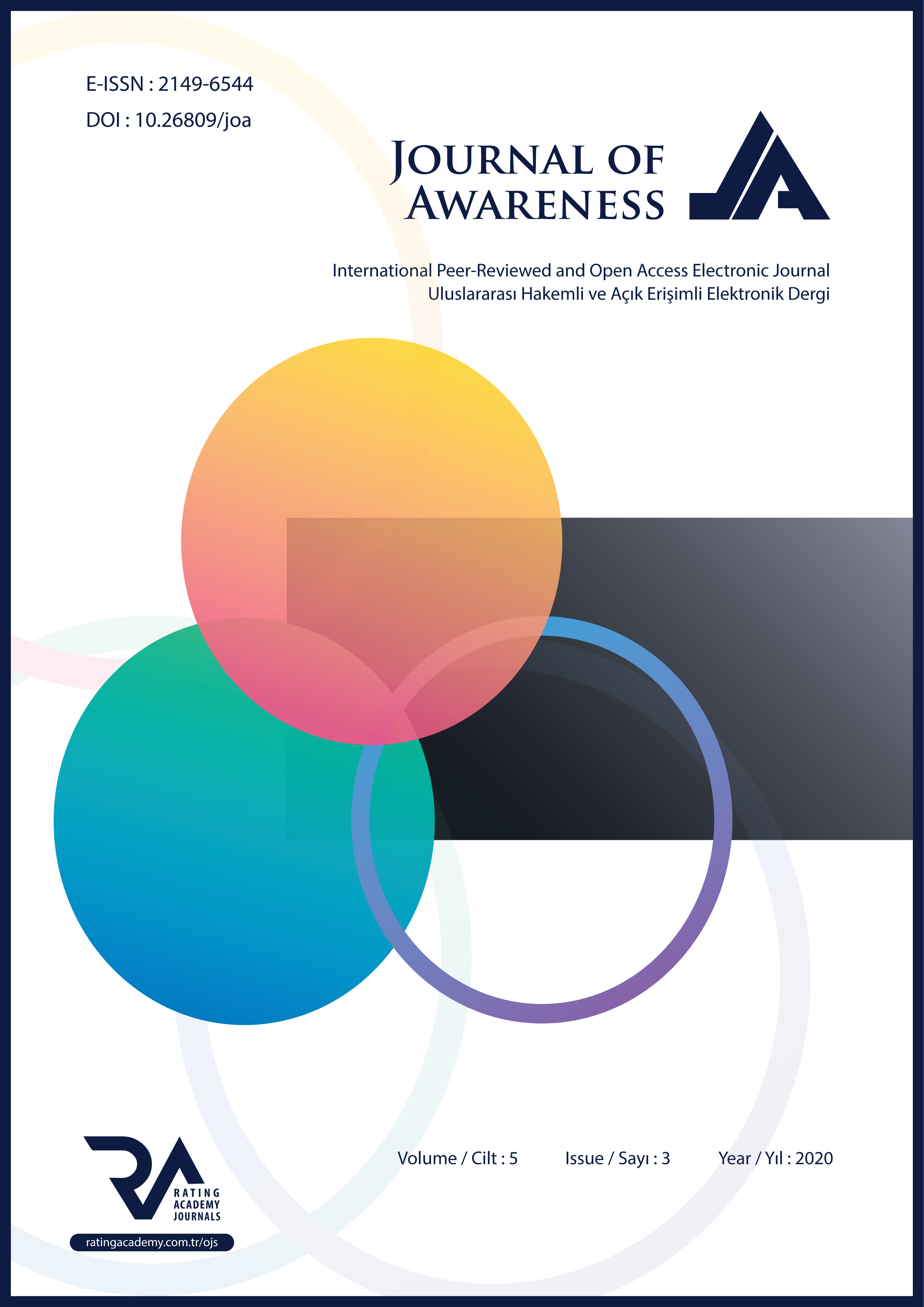AN ANALYSIS ON THE CRITERIA SELECTION AND THEMATIC LINKS OF UNESCO WORLD HERITAGE SITE: CASE OF TURKEY
DOI:
https://doi.org/10.26809/joa.5.023%20Keywords:
UNESCO, Criteria, ThematicAbstract
To be accepted for inscription on the UNESCO World Heritage List, the cultural property must meet at least one criteria from the selection criteria (i–vi), satisfy conditions of authenticity/integrity, and have an adequate management system. These are the three pillars of outstanding universal value. To determine the criteria, thematic studies on the cultural heritage sites are essential. The thematic framework published by ICOMOS serves as a guide for the success of the thematic studies.
In this article, the six criteria used for cultural heritage sites were examined by observing their links with the thematic framework. As a result of the article, the importance of the choosing the right themes and expressing them with criteria was emphasized in order to be accepted nominated properties to the World Heritage List.
Downloads
References
AHUNBAY, Z., (1996), Tarihi Çevre Koruma ve Restorasyon, İstanbul: YEM
AKİPEK, S., (2001), “Dünya Kültürel ve Doğal Mirasının Korunmasına Dair Sözleşmenin Değerlendirilmesi” Ankara Üniversitesi Hukuk Fakültesi Dergisi, Cilt 50, sayı 4.
BEAZLY, O. and DEACON, H., (2007), “The Safeguarding of Intangible Heritage values under the World Heritage Convention: Auschwitz, Hiroshima and Robben Island”. Janet Blake (Ed.), Safeguarding Intangible Cultural Heritage: Challenges and Approaches, Builth Wells: Institute of Art and Law , 93-107.
CAMERON, C. (2010), “World Heritage Sites of Conscience and Memory,” in D. Offenhäuser, W. Zimmerli and M-T. Albert (eds), World Heritage and Cultural Diversity, Bonn: German Commission for UNESCO, 112-9.
ÇOKİŞLER, E., (2019) “Silahlı Çatışmalar Sırasında Kültürel Malların Korunması Rejimi: Tarihsel Gelişimin Analizi” Uluslararası İlişkiler Dergisi, Cilt16, Sayı.61, 55-74
DİKİCİ, A., (2001), “Geleneklerin Toplumdaki Yeri ve Önemi”, Fırat Üniversitesi Sosyal Bilimler Dergisi,Cilt 11, Sayı 2:251-258.
ERASLAN, Ş., (2020), “UNESCO Dünya Miras Listesinde Arkeolojinin Temsiliyeti”, Journal of Awarenes (JOA), Cilt/Volume 5, Sayı/Issue 2,119-134.
ERDER, C. (1975), “Tarihi Çevre Bilinci”, ODTÜ Mimarlık Fakültesi, Yayın No. 24, Ankara
ERDER, C., (1977), “Venedik Tüzüğü Tarihi Bir Anıt Gibi Korunmalıdır”, ODTÜ Mimarlık Fakültesi Dergisi, C.3, Sayı: 2, Ankara.
ERDER, C., (1986), ‘Carta del Restauro Italiana (1931)’, “Our Architectural Heritage: From Consciousness to Conservation”, Museums and monuments xx., Unesco, Paris,215-217.
ERDER, C., (2007), “Tarihi Çevre Bilinci”, Ankara: ODTÜ Mimarlık Fakültesi Yayını No 18.
JOKILEHTO, J., (2006), “World Heritage: Defining the outstanding universal value”. City & Time 2 (2): 1-10.
KHALAF, W.R., (2018), “Roadmap for the Nomination of Reconstructed Cultural Properties for Inscription on the UNESCO World Heritage List” ,Heritage ,1,189-206.
KUBAN, D., (1962), “Restorasyon Kriterleri ve Carta del Restauro”, Vakıflar Dergisi, C.V, Ankara.
LABADİ, S., (2005), “A review of the Global Strategy for a Balanced, Representative and Credible World Heritage List, 1994–2004”. Conservation and Management of Archaeological Sites 7:89–102.
MARDANİ, A., (2018), “Göç Hikayeleri”, Hacettepe Üniversitesi Güzel Sanatlar Enstitüsü Resim Ana Sanat Dalı, Sanatta Yeterlik Tezi,Ankara.
RODWELL, D., (2012), “The Unesco World Heritage Convention, 1972–2012: Reflections and Directions” The Historic Environment: Policy & Practice, Vol.3, Issue 1, 64- 85.
SLATYER, R.O., (1983), “The Origin and Evolution of the World Heritage Committee”. Ambio, 12 (3/4), 138–140.
ZEREN GÜLERSOY, N., (1981), “Kentsel Alanlarda Alınan Koruma Kararlarının Uygulanabilirliği”, Doktora Tezi, İ.T.Ü. Mimarlık Fakültesi.
ICOMOS (1994), https://whc.unesco.org/en/list/614/documents/ “Advisory Body Evaluation (ICOMOS)” Erişim Tarihi 7 Nisan 2020.
ICOMOS (2008), The World Heritage List: What is OUV? Berlin: Verlag.
ICOMOS (2005), The World Heritage List: Filling the Gaps-An Action Plan for Future:
Paris: ICOMOS.
ICOMOS 2015 https://whc.unesco.org/en/list/1488/documents/ “Advisory Body Evaluation (ICOMOS)” Erişim Tarihi 6 Mayıs 2020.
ICOMOS (2018), https://whc.unesco.org/en/list/1572/documents/ “Advisory Body Evaluation (ICOMOS)” Erişim Tarihi 5 Nisan 2020.
ICOMOS (2019), https://whc.unesco.org/archive/2019/whc19-43com-inf8B1-en.pdf Erişim Tarihi 5 Mayıs 2020
UNESCO (1972), https://whc.unesco.org/en/conventiontext/ Erişim Tarihi: 4 Nisan2020.
UNESCO (1977), https://whc.unesco.org/archive/opguide77b.pdf Erişim Tarihi:2 Nisan 2020
UNESCO (1980), https://whc.unesco.org/archive/opguide80.pdf Erişim Tarihi:3 Nisan 2020
UNESCO (2005), https://whc.unesco.org/archive/opguide05-en.pdf Erişim Tarihi:3 Nisan 2020
UNESCO (2018), https://whc.unesco.org/en/list/1572/documents/ “Nomination Text” Erişim Tarihi: 6 Nisan 2020.
UNESCO (2019), https://whc.unesco.org/en/guidelines/ Erişim Tarihi: 5 Nisan 2020.
Downloads
Published
How to Cite
Issue
Section
License
Copyright (c) 2020 Holistence Publications

This work is licensed under a Creative Commons Attribution 4.0 International License.
When the article is accepted for publication in the Journal of Awareness, authors transfer all copyright in the article to the Rating Academy Ar-Ge Yazılım Yayıncılık Eğitim Danışmanlık ve Organizasyon Ticaret Ltd. Şti.The authors reserve all proprietary right other than copyright, such as patent rights.
Everyone who is listed as an author in this article should have made a substantial, direct, intellectual contribution to the work and should take public responsibility for it.
This paper contains works that have not previously published or not under consideration for publication in other journals.











